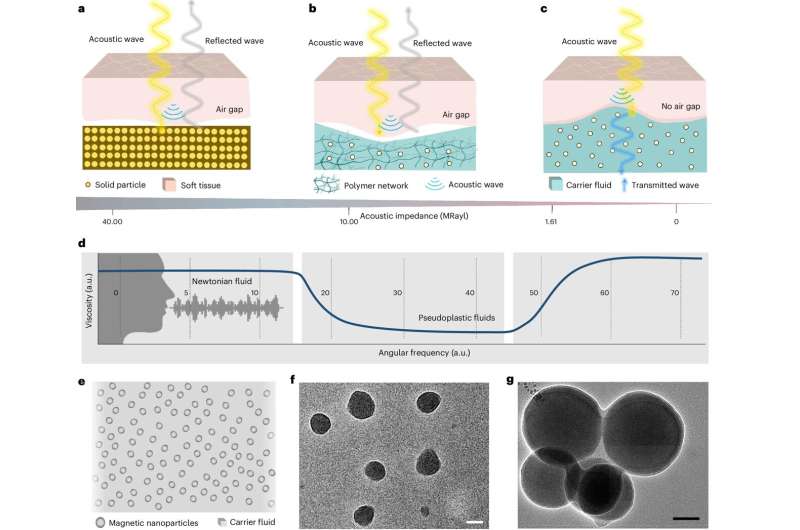In recent years, engineers have developed a wide range of increasingly sophisticated sensors for robotic, portable, wearable and even implantable monitoring. The data collected by these sensors can then be analyzed using state-of-the-art machine learning, allowing devices to recognize specific sounds in audio, objects in images, or other distinctive stimuli.
Researchers at University of California, Los Angeles (UCLA), recently developed an innovative liquid acoustic sensor that, combined with machine learning, can recognize voices with high accuracy even in noisy environments. This sensor, presented in a paper in Nature Electronics, draws inspiration from a fatty organ located in the forehead of many whale species, including dolphins and sperm whales.
“Our work is inspired by the melon in whales, a fatty (i.e., adipose) tissue located in the whale’s forehead,” Jun Chen, corresponding author of the paper, told Tech Xplore. “The melon focuses and modulates vocalizations used in echolocation, matching the acoustic properties of its tissue to the surrounding water to allow sound to travel with minimal energy loss.”
As part of their recent study, Chen and his colleagues set out to develop a promising new sensing system that mimics the function of the melon in whales. Similarly to the melon, the sensor could help to reduce the loss of energy and minimize low-frequency noise, enabling the energy-efficient collection of acoustic data while also improving the accuracy with which their AI-powered sensing system can recognize sounds.
“Artificial intelligence plays a key role in our sensing system, specifically supporting voice recognition,” explained Chen. “Thanks to the low-noise signals captured by the liquid acoustic sensor, the system achieves a high recognition rate with the support of deep learning algorithms.”

The sensor developed by the researchers consists of a three-dimensional oriented and ramified magnetic network structure based on neodymium–iron–boron magnetic nanoparticles. These nanoparticles, which are suspended inside a carrier fluid, collectively behave as a magnet.
Conventional acoustic sensors pick up sounds in their surroundings by detecting deformations to materials and vibrations resulting from the pressure of sound. While this system can be effective in many everyday settings, it does not work equally well in more complex scenarios, such as underwater or within very noisy environments.
“One of our most notable achievements is the introduction of novel liquid materials for acoustic sensing, which have demonstrated excellent performance,” said Chen. “These sensors not only work effectively in the air but can also be utilized in underwater environments, such as oceans, for detecting marine animals and for other applications.”
In initial tests, the liquid acoustic sensor developed by Chen and his colleagues was found to discriminate even minimal pressures of 0.9 Pa, while also exhibiting a high signal-to-noise ratio of 69.1 dB. Moreover, the sensor’s self-filtering capabilities allowed it to reliably reduce low-frequency noise below 30 Hz originating from biomechanical movements.
In noisy environments, the AI-powered acoustic sensing system developed by the researchers was found to recognize voices with a remarkable accuracy of 99%. In the future, it could thus be used to collect acoustic data underwater or in other unusual environments, which could be valuable for environmental monitoring, marine operations and other real-world applications.
“In our next studies, we will leverage artificial intelligence to optimize the liquid materials inside the sensor, enabling it to selectively apply active noise cancellation for broader applications,” added Chen.
More information:
Xun Zhao et al, A self-filtering liquid acoustic sensor for voice recognition, Nature Electronics (2024). DOI: 10.1038/s41928-024-01196-y
© 2024 Science X Network
Citation:
Novel liquid acoustic sensor mimics whale melon to recognize voices in noisy environments (2024, October 26)
retrieved 26 October 2024
from https://techxplore.com/news/2024-10-liquid-acoustic-sensor-mimics-whale.html
This document is subject to copyright. Apart from any fair dealing for the purpose of private study or research, no
part may be reproduced without the written permission. The content is provided for information purposes only.

